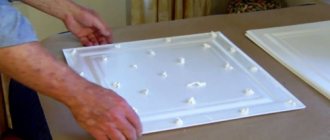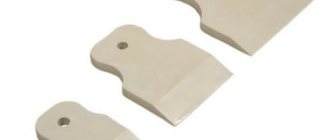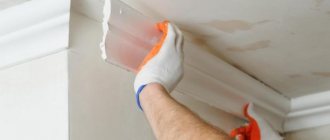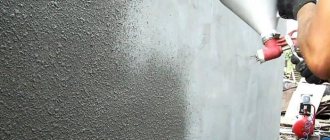Aluminum is a lightweight metal with a special coating. It resists the effects of the external environment, but has low adhesion to other materials. To glue such surfaces or aluminum to other planes, you need a special glue for aluminum. It is this that destroys the coating and ensures reliable bonding.
Types of glue
There are two common types of glue for aluminum joints: polyurethane and epoxy resin.
The first type is:
- One-component, containing polyurethane polymer, without solvents. Open parts of parts are treated with such substances. The plane is pre-moistened, which promotes the activation of aluminum-coated components.
- Two-component, containing a hardener. No pre-wetting is required. The compound resists the effects of oily substances, the formation and spread of fungus and mold, has increased flexibility, and is resistant to temperature changes. It is used when gluing elements of aluminum structures or aluminum to other surfaces. If the quality of gluing is in doubt, then mechanical fastening is carried out in parallel.
Any two-component product is mixed with a hardener before application. The ratio is shown on the packaging.
According to the method of hardening they are divided into:
- Hot solidification - applicable in industry, solidification occurs by raising the temperature to 1000 degrees.
- Cold hardening occurs at temperatures of 15–350 degrees.
View this post on Instagram
A post shared by furnitura05 (@furnitura05ru) on Apr 11, 2021 at 5:26am PDT
Type of glue for aluminum
One of the most suitable glues for gluing aluminum surfaces is an adhesive made from epoxy resin or polyurethane.
A type of glue based on polyurethane:
- One-component.
- Two-component.
The one-component adhesive contains polyurethane polymer and is completely solvent-free. This type of glue is used on the open part of the product. Before starting to join the metal, it is necessary to treat the surface with water. This will allow the one-component adhesive to react with the aluminum, thereby providing a fairly strong bond.
When using two-component glue, there is no need to wet the aluminum surface with water. After all, it contains a hardener. Due to this, this type of glue has increased resistance to various fungi, mold and oils. In addition, it is heat-resistant and has increased ductility.
It is worth noting that two-component adhesive, which is based on epoxy resin, has remarkable properties that allow it to firmly bond metals such as aluminum. In addition, this glue is resistant to high temperatures.
It is often used during the installation of aluminum structures, as well as for gluing materials that have different thermal characteristics, such as porcelain, wood or stone.
It is quite difficult to achieve good adhesion of different materials. That is why, in addition to the glue itself, auxiliary materials, for example, elastic tape, come to the rescue.
There are various compositions based on resin:
- Hot hardening. This type is widely used in various enterprises. The pour point is +1000 °C.
- Cold. Hardening begins at low temperatures, from +15 °C to +350 °C.
Regardless of the manufacturer of the two-component adhesive, before applying it to the surface, it must be mixed with a hardener. The proportions required for this can be found in the instructions for use on the product box.
Characteristics of popular brands
Aluminum is joined using the following adhesives:
- Mastix provides reliable adhesion at temperatures of -50 – +145 degrees. Bonds non-ferrous and ferrous metals. Can be used as a sealing agent.
- Cosmo PU-200 is a two-component solvent-free product. The compound is heat resistant and can be painted after complete hardening. It is capable of fastening aluminum, gypsum fiber boards, wood, plastic, laminate. It is used to renew seams up to 8 mm wide.
- Cosmopur 819 is a polyurethane mixture capable of eliminating gaps, used for fastening corners.
- Wurth Liquid Metal is an adhesive with a cyanoacrylate composition. Bonds aluminum to aluminum. Provides quick setting and drying. Suitable for transparent products. Recommended by experts.
- Astrohim ACE 9305. Adhesion at temperatures -50 – +145 degrees. Used to connect faulty structural elements.
- Titanium is a common composition. The seam can withstand mechanical loads and vibrations.
- Permatex Cold Weld is a heat-resistant, two-component composition. Made on the basis of epoxy resin, it has fire-fighting properties. Withstands heating up to 150 degrees; for a short period of time, raising the temperature to 177 degrees is permissible. Polymerizes in 15 minutes.
- Epoxy Moment metal is a two-component adhesive. Can glue aluminum or other surfaces (wood, marble, glass). Eliminates cracks and gaps.
- Abro Steel for the repair of liquid tanks, sanitary equipment. Before use, thoroughly clean the surfaces.
Deformation welding technology features
When aluminum pieces are joined at room temperature, this method is called “cold welding.” In addition to the use of adhesive compositions, which were described above, there is the principle of deformation. This technology consists of several key stages:
- Aluminum surfaces are initially degreased.
- Next, the workpieces are brought as close as possible and compressed under pressure.
During the compression process, the outer oxidized layer is destroyed. Intermolecular bonds are formed between the crystal lattices of the metal. This ensures a reliable connection.
Read also: Molds for casting figures
This technology can be used to bond other non-ferrous metals. Pressure can be applied uniformly or vibration can be added. Based on deformation technology, three connection methods can be distinguished, which will be described in more detail below.
Features of choosing heat-resistant options
When buying glue for aluminum, pay attention to the information indicated on the packaging:
- Heat resistance is important for the use of products at elevated temperatures.
- Water resistance when glued elements interact with water.
- Bonding with different planes.
- Polymerization time depending on temperature of use.
- Shelf life is an important indicator, since expired raw materials do not have the declared properties.
Aluminum glue is easy to use and connects all the necessary parts. And this is without the use of welding or mechanical intervention.
Modern adhesives are not made only from natural ingredients; they contain polymers.
How to choose adhesive for aluminum?
Important! Depending on the adhesive, initial bonding takes from five minutes to an hour. During this period of time, it is necessary to fix the elements to be glued motionless.
When purchasing glue, you should pay attention to a number of characteristics that can be found on the packaging.
They are as follows:
- Resistance to various temperatures.
- Moisture resistance.
- Complete hardening time.
How to work with adhesive composition
The use of adhesives makes it easier to join parts at home. To carry out the procedure, you will need sandpaper, glue, and a degreaser (acetone).
Work is carried out in a room with proper ventilation or with constant ventilation. IZ means are also used.
The following steps are performed during the gluing process:
- The surface is cleaned of contaminants and treated with fine sandpaper.
- Fatty areas are degreased with acetone, this will significantly increase adhesion.
- Work is carried out on a completely dried surface.
- The adhesive mass and hardener are mixed in the container.
- The solution is stirred until a homogeneous consistency is obtained (uniform shade, consistency).
The prepared solution is used within 10–60 minutes. The manufacturer indicates more precise times on the packaging.
- Both planes are treated with adhesive (spotwise or in a thin, uniform layer).
- Connect the parts tightly and secure until completely dry.
- Drying time depends on the manufacturer’s trademark and the conditions created; it will take approximately 2–24 hours.
During drying, the elements should not be subjected to mechanical stress.
Useful video on the topic:
High-tech joining of aluminum with “Cold Welding” glue
Cold welding of aluminum is the joining of parts using a special adhesive mixture. Thanks to it, a reliable connection is obtained without heating the metal.
An epoxy compound acts as a binding mixture. It is a thick mass, the consistency of which resembles mastic. Cold welding for aluminum consists of epoxy resin saturated with metal powder. Due to its content in the resin, the strength of the hardened composition increases. The glued area can be stronger than the material itself.
In addition to the main component (epoxy resin), the package contains a second component. This is a special hardener that, when mixed with epoxy, reacts and the composition begins to harden. In a period of time from 10 to 30 minutes, the master must have time to apply resin to the parts and connect them. Next, you need to press the individual parts together for 15-20 minutes (in some adhesives, the fixation time for hardening reaches 40 minutes).
Advice! It is advisable to begin further work 2-3 hours after applying the adhesive mixture. As a rule, you need to wait at least a day for the epoxy resin to completely harden.
It is important to remember that both high-temperature and cold welding are harmful processes that require individual protection of the human body. When interacting with adhesives, the room must be well ventilated and there is no open fire nearby. To protect your respiratory system, you should wear a respirator. To avoid irritation of the mucous membrane of the eye, it is advisable to wear safety glasses. If epoxy resin is swallowed, you should go to the hospital immediately.
Adhesive mixtures have a number of serious advantages:
- There is no need to buy additional equipment or look for network connection points.
- Anyone can work with epoxy resin without any skills. The packages contain step-by-step instructions. The same cannot be said about welding using electrical equipment.
- The hardened glue forms a strong seam, which is slightly inferior to welded joints.
- Hardened compounds are resistant to corrosion processes, moisture, oils and fuel.
- After 20-60 minutes, a strong connection is obtained.
- Cold welding is considered an economical option for repairing a variety of equipment.
When using automatic welding machines, the metal being joined is exposed to high temperatures and severe deformation. Cold welding does not have these disadvantages. However, glue cannot be used when repairing high-pressure vessels and containers that are often subject to changes in the environment (humidity, temperature).
Read also: Arrangement of lamps on the ceiling in the bathroom
How to glue aluminum to aluminum correctly
When gluing two aluminum elements, follow these steps:
- Rust on the surface is removed with a brush, and sanding is done.
- Degrease the area to be glued with acetone.
- Dry this area.
- Prepare the adhesive: place mixtures of two-component adhesive until homogeneous.
- The product is applied pointwise or in a thin layer.
- The parts are pressed against each other.
- Fixation is carried out for up to 20 minutes.
- Excess is removed with a rag moistened with solvent.
How to glue aluminum to plastic
Two-component compositions allow you to glue not only aluminum surfaces, but you can glue aluminum to plastic:
- Tools and materials are being prepared.
- Cleaning is done using coarse sandpaper.
- Degreasing is carried out with acetone or alcohol solution.
- The areas are dried.
- The adhesive mixture is being prepared.
- Use a brush to spread a thin layer of glue over the area.
- The elements are pressed tightly.
- Excess is removed with a clean rag.
- Wait until completely dry.
Aluminum adhesive: selection criteria, step-by-step instructions for use
Aluminum adhesive is designed to provide a strong connection of parts without compromising the structural integrity of structural elements. The use of specially developed adhesive compositions promotes high-quality bonding of aluminum surfaces to various materials with minimal weight.
Methods for gluing aluminum
Due to low porosity and the formation of an oxide film, aluminum does not have adhesive properties. Connection work is most often performed using cold welding in the following ways:
- based on the principle of diffusion. Under the influence of pressure, the molecules of the two surfaces mix with each other. The method is used at metallurgical enterprises;
- gluing using special compounds. Products based on epoxy resin, a type of polyurethane adhesive composition, are used.
The latter method is suitable for bonding aluminum to aluminum and other materials.
Types and criteria for choosing glue
Two types of adhesive compositions are used:
- polymer. The solution is a polyurethane one- or two-component composition;
- based on resins. The product contains epoxy resin and hardener.
The key criteria for choosing a means for fastening aluminum surfaces include the following items:
- heat resistance. Resistance to high temperature loads is characteristic of two-component polyurethane adhesives and epoxy solutions;
- resistance to moisture. High moisture resistance properties are inherent in adhesive compositions made of polyurethane;
- curing time. The setting period of the composition varies depending on the brand and ranges from 5 minutes to 1 hour.
What does aluminum glue look like?
Also, when choosing adhesive for aluminum, the features of the planned activities and the nuances of the work are taken into account:
- Epoxy resin based sealants should not be used on food grade aluminum structures.
- When it comes to joining aluminum alloys, it is difficult to achieve quality results using epoxy glue. In this case, it is advisable to give preference to a product that contains methyl acrylate.
When choosing an adhesive material for joining aluminum surfaces, it is worth considering that only compositions containing acids and alkalis are suitable. The latter are designed to break down the oxide film, which is important for good adhesion of the adhesive.
Polyurethane glue
An easy-to-use and common solution for working with aluminum is polyurethane glue. There are 2 types of products:
- one-component. This composition is represented by one polymer without a solvent and is intended for use on open parts of the processed products;
- two-component. The adhesive base is supplemented with a hardener; the product is characterized by increased plasticity and heat resistance.
When using one-component polyurethane glue, the surface to be treated is pre-moistened with water. This promotes better adhesion and strong fixation of parts. With a two-component solution, there is no need for wetting. At the same time, the compounds are highly resistant to the aggressive effects of oil and pathogenic microorganisms.
Advantages of polyurethane compounds for gluing aluminum:
- high strength coefficient;
- inertness to corrosion of any type;
- resistance to static and dynamic loads;
- fast hardening;
- the joint retains its strength properties during operation in the temperature range from +30°C to -80°C.
Polyurethane adhesive can be used to bond aluminum to aluminum and other substrates, including steel, polymers, stone and glass materials.
Epoxy resin based compositions
The solution is positioned as a product with high adhesive properties and is resistant to temperature loads. The nuances of using resin adhesive products:
- Epoxy-based sealants are used in the installation of aluminum structures and are also used for durable joining of materials with different parameters of thermal expansion;
- Epoxy resin adhesives are suitable for bonding aluminum to wood, stone, and porcelain. For high-quality adhesion of surfaces made of various materials, mechanical devices are additionally introduced, for example, an elastic tape.
Epoxy adhesives are divided into 2 categories:
- High-temperature hardening compositions. Products for industrial use that require conditions above +1000°C to harden.
- Cold hardening epoxy adhesives. They harden at temperatures from +15 to +350°C.
Epoxy glue for aluminum
When planning to work with compositions based on epoxy resins, it is worth considering that hardeners are added in different proportions; you should follow the manufacturer's instructions.
Principles of working with adhesives and gluing instructions
The rules for using special compounds for joining aluminum surfaces provide for the following points:
- work is carried out in conditions of sufficient ventilation of the space, since the products contain caustic compounds with toxic components;
- it is necessary to use personal protective equipment, work in gloves, a respirator and safety glasses;
- Before starting the procedures, you should ensure that you have the equipment and materials required by the instructions.
At the initial stage, it is advisable to prepare the surfaces, clean them from dirt and dust, and degrease them for better adhesion. To do this, you need to have a brush with stiff bristles, abrasive, acetone and rags on hand.
Step-by-step instructions for gluing aluminum products:
- Surfaces are cleaned of dirt, rust and plaque using a metal brush or grinder with a special brush attachment.
- The joint areas must be sanded using fine-grained sandpaper.
- Degrease the coating with acetone.
- Combine the adhesive composition with the hardener according to the manufacturer's instructions, mix the components until a homogeneous mass is formed. The finished mixture must be used for its intended purpose within the time specified by the manufacturer, which varies between 10-60 minutes depending on the brand.
- The glue is applied to both surfaces in a thin strip or dotted.
- Next you need to connect the elements and press them tightly against each other.
- Excess adhesive is removed with a rag.
Next, you should fix the position of the structure for the period specified in the instructions until the connecting mixture hardens.
The period for complete hardening of the glue is 2-24 hours, depending on the temperature in the room and the brand of the product.
Review of popular products for gluing aluminum surfaces
In order to qualitatively combine aluminum with aluminum or other materials, you should give preference to products from trusted brands.
Cosmo PU-200.280 Cosmofenduo
High-strength polyurethane adhesive for working with aluminum, wood, fiberglass and a number of other materials. The product is considered one of the best heat-resistant adhesives for aluminum; in Moscow, the cost of the product varies, starting from 800 rubles / 900 ml.
Useful tips
Craftsmen advise following some useful tips when buying glue and carrying out work:
- Two-component compounds cope with the connection of aluminum elements, but if it is necessary to glue aluminum alloys, then it is better to use products containing methyl acrylate.
- Bonding of aluminum occurs due to the splitting of the coating by the components contained in a special product.
- If the design provides for use for storing food and water, then you cannot use products containing epoxy resins.
Gas welding can cause metal oxidation, which does not occur when using adhesives.
We recommend videos on the topic:
Features of heat-resistant adhesive for metal
Adhesive compositions are fairly easy-to-use means of joining workpieces and parts of various types. Heat-resistant adhesive for metal is no exception in this sense, since it allows you to do without the welding procedure.
Unlike previous times, when adhesives were prepared mainly from natural ingredients, modern manufacturers prefer to use synthetic polymers.
Heat-resistant adhesives belong to the category of special chemical compounds that are characterized by a high degree of resistance to elevated temperatures.











